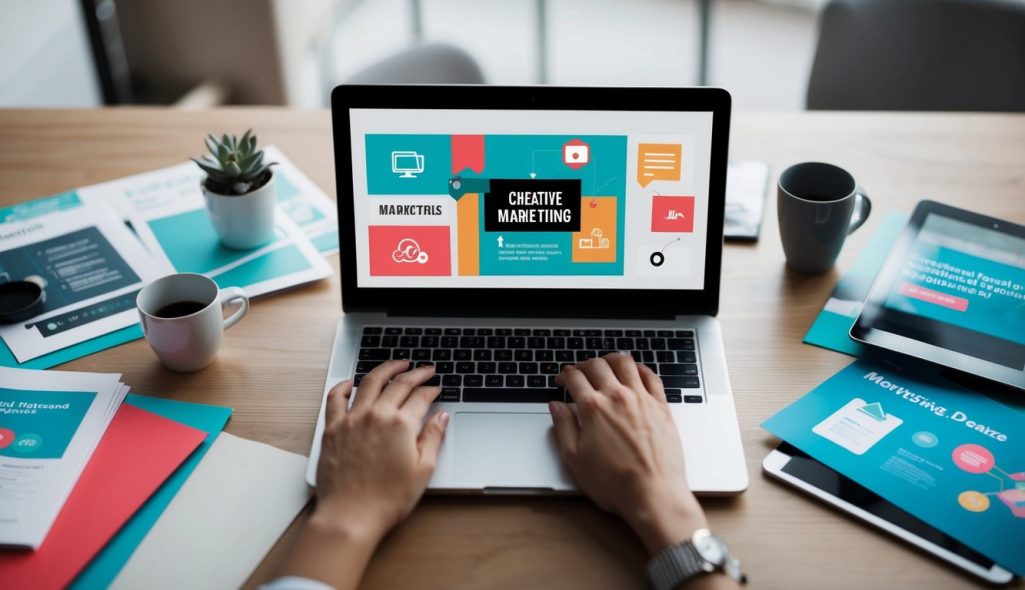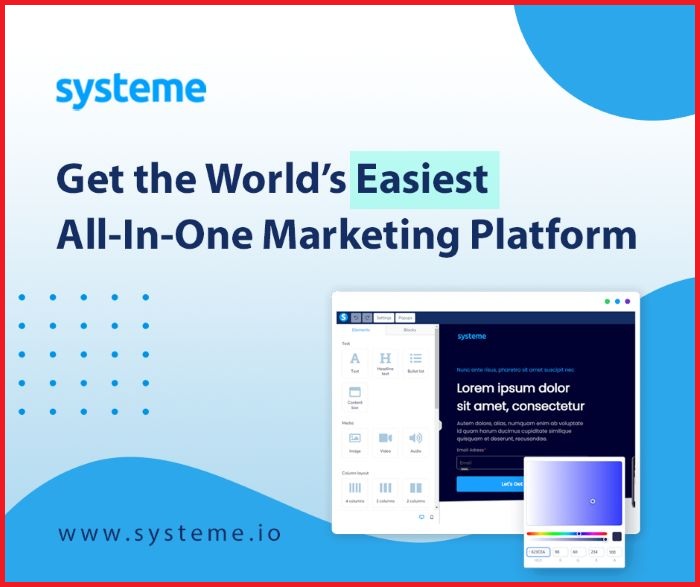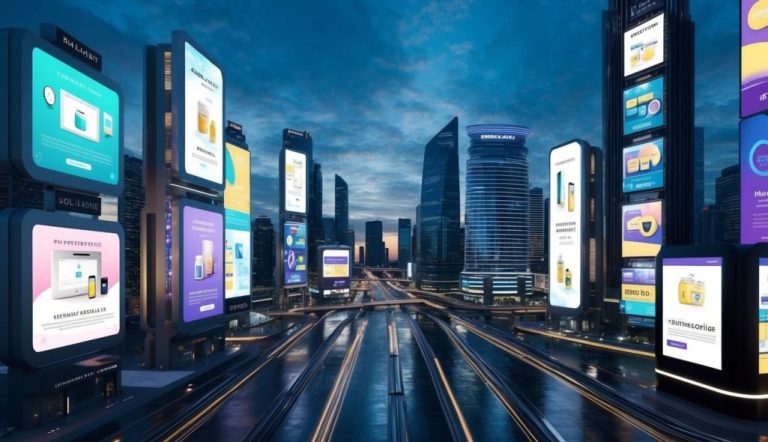Email marketing remains one of the most powerful tools to connect with your audience. It offers targeted communication that can lead to significant engagement and growth. You can optimize your email campaigns for higher open rates and conversions by focusing on impactful strategies. This involves crafting personalized and relevant content, which resonates with your audience and prompts them to take action.

One way to enhance your email success is by experimenting with captivating subject lines and compelling calls to action. These elements draw readers in and encourage them to engage further. Additionally, integrating AI tools like ChatGPT can help create innovative campaign elements that would otherwise require more effort and creativity.
Maximizing engagement goes beyond just sending emails; it requires analyzing performance and continuously testing new ideas. By understanding what drives your audience, you can refine your approach and achieve even greater results.
Key Takeaways
- Optimize campaigns with personalized content and engaging subject lines.
- Use AI tools to enhance and simplify email marketing efforts.
- Continuously test and analyze to improve engagement and conversion rates.
Understanding the Basics of Email Marketing
Email marketing is a key strategy for engaging with your audience and achieving specific business goals. It involves crafting effective messages that reach your subscribers’ inboxes and encourage interaction.
Email Marketing Fundamentals
Email marketing is all about building a connection with your audience through consistent and meaningful communication. This method helps you directly reach your customers, providing personalized content that can increase engagement and drive responses. You should segment your audience based on their preferences and behavior to tailor content that meets their interests.
Crafting compelling subject lines boosts open rates and makes sure your emails don’t end up in the spam folder. Using tools like automation can streamline your email marketing efforts, allowing you to send timely and relevant messages. Focus on clear call-to-action (CTA) to guide your readers on the next steps, such as visiting your website or purchasing a product.
Email Marketing Campaigns
Email marketing campaigns are structured with a purpose, whether it’s promoting a product, increasing website traffic, or gathering feedback. Campaigns generally fall into three categories: engagement, informational, and transactional emails. Engagement emails aim to capture interest and encourage interaction, while informational emails keep your audience updated on the latest company news and offers.
It’s important to track metrics like open rates and click-through rates to measure how well your campaigns are performing. Regularly analyze these metrics to identify patterns and insights that can help improve future campaigns.
Crafting Captivating Subject Lines
Writing a compelling email subject line is essential to grabbing attention. Including personal touches and well-thought-out preheader text can significantly impact your open rate and engage your audience.
Personalization in Subject Lines
Personalizing subject lines can greatly increase engagement. Addressing recipients directly by name can make your email feel more relevant. Including the recipient’s location or past interactions can enhance this effect. For instance, using “John, your exclusive offer awaits!” can make the subject line feel tailored.
Modern email tools can automate these personal touches to save time and effort. Personalization not only raises interest but can also improve your email’s chances of bypassing spam filters. By making each recipient feel noticed and valued, you can boost your message’s impact.
The Impact of Preheader Text
Preheader text plays a crucial role in email marketing. It appears next to or below the subject line in the inbox, providing a sneak peek into the email content. Effective preheaders should complement the subject line and provide additional context or urgency.
For example, pairing a subject line like “Flash Sale Alert!” with preheader text such as “Hurry, offers end tonight!” can drive quick action. Keeping preheader text concise yet informative is vital since it can significantly sway the decision to open the email. An engaging preheader, coupled with a captivating subject line, can enhance your open rate.
Optimizing Email Open Rates
Improving email open rates involves strategic elements like the sender name and the timing of your emails. These factors play crucial roles in determining whether your audience decides to open and engage with your messages.
The Role of Sender Name
The sender name is the first thing your recipients see in their inbox. It can greatly influence whether they decide to open your email. Make sure your sender name is recognizable and trustworthy to your audience. This could be the name of a person they know from your organization or the brand name that resonates with them.
Studies have shown that personalized sender names can boost open rates. Consistency is also key. Using the same sender name for each campaign helps build familiarity and trust with your audience over time. Avoid using generic or spammy senders like “no-reply” which can discourage recipients from opening your email.
Timing and Frequency of Emails
Timing is crucial for maximizing email open rates. Sending emails when your audience is most likely to check their inbox, such as late mornings or early afternoons, can yield better results. Utilize data analytics to understand when your audience is most active and adjust your send times accordingly.
Frequency also matters. Sending emails too often can overwhelm subscribers, leading to lower open rates and more unsubscribes. Aim to find a balance that keeps your brand in their minds without becoming a nuisance. You can experiment with sending patterns and monitor your open rates to find the best schedule that works for your audience. Adjusting timing and frequency can help in dramatically increasing your open rates by as much as 50%.
Maximizing Engagement and Conversions
Increasing engagement and conversion rates is vital in email marketing. This can be achieved by using effective calls to action, showcasing social proof, and incorporating photos or videos into your emails. Implementing these strategies can help boost your click-through rates and drive more sales.
Crafting a Compelling Call to Action
A call to action (CTA) guides your audience to the next step, whether it’s clicking a link or making a purchase. To create an effective CTA, use clear and direct language. For example, phrases like “Shop Now” or “Learn More” can prompt readers to act.
Your CTA should stand out. Consider using buttons or bold text to make it noticeable. The color of your CTA button can also influence engagement. Bright colors often draw more attention.
Make sure your CTA matches the overall message of your email and the needs of your audience. By doing this, you can encourage higher click-through rates and improve conversion rates.
Leveraging Social Proof
Social proof is a powerful tool to increase trust and engagement in your emails. Including testimonials or reviews can reassure readers of your product’s value. For instance, sharing a short testimonial from a satisfied customer can highlight your brand’s credibility.
Showing off user-generated content, like photos from real customers, can also be effective. This type of content can make your emails feel more authentic and relatable.
Consider mentioning any awards or media attention your product has received. Sharing these details can build trust and motivate recipients to convert. By leveraging social proof, you can boost your click-through and conversion rates.
Utilizing Videos and Images
Engaging your audience with visuals can enhance the impact of your emails. Videos are a great way to showcase your product or service. They can provide a dynamic and engaging experience that text alone might not achieve.
Images can also boost engagement. Use high-quality photos that align with your brand’s message. Be mindful of file sizes; large images might slow down load times or cause delivery issues.
Make sure videos and images add value and are relevant to your email’s goal. When used effectively, these elements can improve the overall user experience and increase your click-through and conversion rates.
Enhancing Email Content with Personalization
Personalization in email marketing can significantly boost engagement. By tailoring your emails to the needs and interests of your audience, you can create stronger connections. Segmentation and individualized experiences are key ways to make this happen.
Segmentation Strategies
Segmentation involves dividing your email list into smaller groups based on specific characteristics. This could include demographics like age, location, or purchase history. Segmented campaigns allow you to send more relevant email content to each group.
Using data-driven insights, you can target these groups with personalized emails that resonate with their preferences. For instance, if you know a segment frequently buys skincare products, you might send them promotions on the latest skincare lines. This targeted approach enhances relevance and engagement.
Implementing segmentation isn’t just about splitting your email list. It requires understanding your audience’s needs and behaviors. Use tools like customer surveys or behavior tracking to gather information about what interests your segments. By doing this, you’re not just sending emails—you’re opening a dialogue that can lead to improved customer relationships.
Individualized Email Experiences
Creating individualized email experiences means tailoring each message to reflect a subscriber’s unique preferences. This goes beyond basic segmentation. By using technology like AI, you can tailor content in real time for each recipient. Incorporating their name, past interactions, or browsing behavior can make emails feel more personal.
Advanced strategies, such as predictive analytics, can help anticipate what a customer might be interested in next. For example, if a customer regularly purchases running gear, you might suggest new sports accessories. Personalization helps you make each subscriber feel valued and understood.
To achieve this, leverage tools that allow dynamic content insertion based on user data. Predict what customers want by analyzing their past purchases or website visits. By investing in technology and data analysis, your emails can become more than just messages—they can be meaningful interactions that drive conversions.
Driving Growth with Email Marketing Hacks
Email marketing provides a powerful framework to boost your business. By leveraging automation and AI, you can streamline your efforts and enhance customer engagement. At the same time, effective use of lead magnets and nurturing strategies can significantly increase your conversion rates.
Incorporating Automation and AI
Integrating automation and AI tools into your email marketing can transform your campaigns. Automation helps with scheduling and sending emails at the perfect time, ensuring your messages reach your audience when they are most likely to engage. AI tools can assist in crafting personalized content, such as subject lines and call-to-action buttons that resonate with your subscribers.
AI can also analyze user behavior to suggest products or content that match individual preferences. Using platforms like ChatGPT for content creation and Google Bard for data-driven insights can elevate your campaigns. Find more tips on leveraging AI in email marketing with these email marketing hacks.
Exploring Lead Magnets and Nurturing Leads
Using lead magnets is a smart way to attract new subscribers. These can be free offers like e-books, checklists, or webinars that provide value upfront. Once you’ve captured leads, it’s crucial to nurture them through a targeted series of emails that build trust and engagement.
Segment your audience to send tailored content that addresses their specific needs and interests. This approach makes your emails more relevant and increases the likelihood of conversions. Developing a strong nurturing strategy is key to turning prospects into loyal customers. Learn more about using lead magnets in your email marketing growth hacks.
Strengthening Campaigns through Testing and Analytics
Improving your email marketing campaigns begins with the strategic use of data. By leveraging A/B testing and monitoring click and conversion metrics, you can fine-tune your approach for better engagement and higher returns. These methods offer practical insights into what works best for your audience.
The Practice of A/B Testing
A/B testing is essential for understanding how different elements of your emails impact user engagement. By creating two versions of an email—each with a slight variation—you can see which one performs better in terms of open rates and click-throughs. This helps you optimize for increased engagement and ROI.
To make the most of A/B testing, focus on one variable at a time. This could be a subject line, call-to-action, or even email layout. Tracking these changes lets you pinpoint what increases effectiveness in your campaigns. As Elastic Email highlights, data-driven decisions lead to high-performing campaigns.
Analyzing Click and Conversion Metrics
Click and conversion metrics provide valuable information on audience interaction. Tracking these metrics helps you understand user preferences and measure the success of your campaigns. High click-through rates indicate interest in your content, while bounce rates can signal areas needing improvement.
To maximize your return on investment, analyze the data regularly. Identify patterns, such as which email formats or topics are most successful. Adjust your strategy accordingly to improve conversion rates and achieve a better ROI. As Coalition Technologies explains, using analytics effectively can enhance audience understanding and drive campaign success.
Integrating with Multi-Channel Marketing
Combining email with other marketing channels can enhance your reach and effectiveness. Integrating email into your larger digital marketing strategy can create a cohesive experience for your audience. This approach helps build brand awareness and strengthens engagement.
Synchronizing Email and Social Media Strategies
To make the most of your email and social media strategies, ensure they complement each other. Start by using social media insights to tailor your email content.
For example, track which posts gain the most engagement and adapt similar themes in your emails to boost interaction.
Promote your email sign-ups on social media platforms. Share snippets or exclusive content that requires email subscription, encouraging followers to join your mailing list. Cross-channel promotions can increase both followers and subscribers.
Moreover, you can share email-exclusive content on social media to create a sense of exclusivity. Encourage your audience to discuss email topics on social networks, driving more conversation and interest. This integrated approach can amplify your brand presence across multiple platforms, enhancing your overall marketing effectiveness.
Emails in the Greater Digital Marketing Ecosystem
Emails play a crucial role in the broader digital marketing ecosystem. They serve as a direct line to your audience, providing personalized communication that can be segmented based on user preferences and behaviors. This personalization makes emails particularly effective within the larger marketing mix.
Ensure your email campaigns support and enhance your other digital marketing efforts. Use emails to re-engage users who have shown interest on platforms like social media.
For example, you might send targeted follow-ups based on user actions or preferences observed on those platforms.
Keep analyzing email performance and adapt campaigns to align with broader marketing trends. Use data to optimize frequency, content, and timing, ensuring emails contribute positively to your digital marketing strategy. Integrating emails thoughtfully can enhance your overall campaign results, leading to greater engagement and conversions.
Optimization for Conversion Rate Improvement
To improve email marketing conversion rates, it’s important to focus on mobile optimization and effective conversion rate optimization (CRO) techniques. These strategies ensure that emails are accessible and engaging to a wide audience, helping increase interactions and conversions.
Mobile Optimization for Better Accessibility
Most people check emails on their phones, so making sure your emails look good on small screens is crucial. You should use responsive design so emails adjust to different screen sizes.
A few strategies include larger fonts and buttons for easier tapping. Avoid clutter and keep layouts simple.
Another tip is to keep the text-to-image ratio balanced to avoid spam filters. Make sure your calls to action (CTAs) are clear, and not hidden in images. Adding alt text for images ensures your message is still conveyed if images don’t load.
Effective CRO Techniques
CRO techniques can significantly boost your conversion rates. Implement A/B testing to find which email designs and contents are most effective. Test subject lines, CTAs, and email formats to see what resonates with your audience.
Segmenting your email list is another powerful strategy. Tailor content to different groups for more relevant messaging. Personalization, like using the recipient’s name, can improve engagement.
To combine these methods, consider using dynamic content, which changes based on user behavior or preferences.
By using strong CTAs and a personalized approach, your emails can become more effective in driving action and improving your conversion rates.
Building a Welcome Email Sequence
Building a welcome email sequence is crucial to creating a positive first impression with your new subscribers. It ensures they receive the necessary information to get started and helps establish a strong connection with your brand right from the start.
Creating a Lasting First Impression
Your welcome email is often the first direct interaction with your subscribers. It’s a chance to introduce your brand and set expectations.
Opening with a friendly greeting can create a warm welcome. Highlight what subscribers can gain by joining your community, such as exclusive offers or insider tips.
Incorporating fear of missing out (FOMO) can boost engagement. Mention special deals or early access to spark interest. Visuals like your logo and brand colors help reinforce your brand identity. End with a clear call to action, guiding readers on what to do next, whether it’s exploring your site or following your social media.
The Vital Elements of Welcome Emails
A successful welcome email consists of a few essential elements. Start with a clear and engaging subject line that encourages subscribers to open the email. Personalize the content with the subscriber’s name for an added touch.
Provide concise information about your services or products. You could list key features or benefits in brief bullet points. Sharing a bit of your brand’s story or values adds a personal touch.
To enhance the customer experience, ensure the email is concise yet informative. Include links to valuable resources or popular content on your website. Finally, ensure it’s easy for subscribers to manage their preferences or unsubscribe, which builds trust and respect for their time.
Email Template Design and Layout Considerations
Crafting effective email templates is crucial for capturing your audience’s attention and ensuring your message is delivered effectively. Key aspects include ensuring your design works across devices and maintaining consistent branding.
Responsive Design for Different Devices
When creating email templates, consider how your design can adapt to different screens. Your emails should look good and function well on desktops, tablets, and phones.
This requires using flexible layouts and scalable images that adjust automatically to fit the device used.
Using a single-column layout makes emails easier to read on small screens. Avoid relying solely on images for conveying messages, as some email clients might block them. Instead, use a balance of text and visuals to communicate your message, ensuring content is accessible in any format.
Many small businesses benefit from using responsive design to increase engagement. By ensuring that your emails are accessible to a wide audience, you enhance their effectiveness.
Branding Consistency in Email Designs
Maintaining consistent branding within your email designs reinforces your brand identity. This involves sticking to your brand’s colors, fonts, and overall style so that recipients easily recognize your emails.
To achieve this, create templates that use your brand’s color scheme and logos. Use the same typography and visual elements across all your communications to create a unified look.
Brand consistency is key for small businesses looking to build trust and recognition. It makes your messages more memorable and reinforces your brand’s presence in the minds of your audience. Regularly update your email designs to reflect any changes in your brand’s visual identity to stay current.
Essential Tips for Email Proofreading and Testing
Careful proofreading and thorough testing are vital parts of crafting effective emails. Ensuring clarity and accuracy prevents misunderstandings and maintains your professionalism. Each step helps you present well-polished communications.
The Importance of Proofreading
Proofreading your emails ensures your message is clear and free from errors. It helps you eliminate spelling and grammar mistakes, which can tarnish your credibility.
Beyond catching typos, proofreading can help you spot filler words that weaken your message. Consider replacing weak adverbs with strong verbs to enhance message strength. For example, use “depressed” instead of “extremely downcast.”
Tone matters as well. Your emails should reflect the right mood for your audience—be it cheerful, professional, or friendly. Poor tone may lead recipients to misinterpret your intent.
When done well, proofreading ensures compliance with language standards and keeps emails professional and on point, as emphasized by Mailchimp.
Performing Effective Email Testing
Before sending, test your emails to see how they appear in different email clients. Tools like Klaviyo let you preview emails to see if content displays correctly.
Sending test emails to yourself or a small group can help see how emails look across platforms. Testing helps you verify links, ensure images load, and check overall layout.
Always conduct surveys with trusted contacts to get feedback on readability and tone. Simple tests can also detect if your email might trigger spam filters.
This helps maintain high delivery rates and ensures your message reaches your audience effectively. Proper testing aligns your email with the message you want to convey and helps achieve your communication goals.
Frequently Asked Questions
Boosting your email marketing efforts involves improving open rates, tracking crucial metrics, and engaging your subscribers. Techniques like list segmentation, creating attention-grabbing subject lines, and A/B testing play significant roles. Here are answers to some common questions in these areas.
What strategies can improve open rates in email marketing?
Open rates can be improved by using personalized subject lines and sending emails at the right time. Ensure your content aligns with the interests of your subscribers. Also, use a recognizable sender name to build trust.
Which metrics are most crucial for gauging email marketing success?
Key metrics include open rates, click-through rates, and conversion rates. Knowing these helps you adjust your strategies. Also, monitor bounce rates and unsubscribe rates to ensure your audience is engaged and interested.
How does segmentation impact email marketing effectiveness?
Segmentation allows you to tailor emails to specific groups within your audience. This can lead to better engagement and higher revenue. Targeted emails are more relevant, making them more likely to be opened and acted upon. Segmented emails can increase revenue by 58%.
What are the best practices for crafting engaging email subject lines?
Subject lines should be concise, clear, and compelling. Personalization can increase engagement. Use action-oriented language and avoid words that might trigger spam filters. Ensure your subject line reflects the email’s content to build trust with your subscribers.
Can you suggest effective ways to grow an email subscriber list?
Offer incentives like discounts or exclusive content to encourage sign-ups. Use social media and your website to promote your newsletter. Ensure the sign-up process is simple and fast. Encourage current subscribers to share your emails with others.
What role does A/B testing play in optimizing email marketing campaigns?
A/B testing helps determine what works best in your emails. You can test different subject lines, content, and send times to see what resonates most with your audience. This continuous improvement can lead to higher engagement and better results from your campaigns.





